Southbound CSX train K429-11 crashed into a significant landslide Thursday morning just before 7 a.m. on CSX’s Kingsport Subdivision, about 5 miles north of Elkhorn City, Kentucky. The train, consisting of three CSX General Electric-built locomotives, two buffer cars, and 96 loaded ethanol tankers, derailed upon impacting the slide, which resulted from nearly two weeks of rainfall across the central Appalachian mountains. The lead locomotive, CSX GE AC4400CW No. 168 plunged nose-first into the rain-swollen Russell Fork of the Big Sandy River below. Another, the number of which was not visible, came to rest on its side, spilling diesel fuel along the riverbank and into the water. The third became entangled in the wreckage of two tankers that derailed and burst into flames, also igniting the spilled diesel fuel.
In a video posted to social media and picked up by numerous news outlets, the crew can be heard yelling, “Where’s the boat?” The videographer replies, “It’s coming,” while pleading with the crew, “Don’t give up.” The swift-water boat, operated by the nearby Millard Fire Department, finally arrived, and the crew members were rescued just before the fire spread to the cab of their felled locomotive. “That was a sigh of relief,” Cox says. “Once I seen them get off the front of the engine and they were both alive, both walking … that’s just a sigh of relief. It’s a miracle they’re alive today.” The crew members were taken to Pikeville Medical Center hospital for treatment of their injuries, the extent of which was not available. Once the crew was removed from the train, officials at the scene watched as the fire continued to burn, consuming the wreckage an eventually growing to include flames more than 100 feet in the air before mostly burning itself out.
Dozens of CSX personnel converged on the scene, as did personnel from R.J. Corman Railroad Group and personnel and equipment from Donahue Brothers Emergency Railroad Services. Numerous local and state agencies in Kentucky also responded to the incident. After the worst of the fire was out, CSX personnel cut the train near the head end and pulled the underailed cars away from the scene. Another landslide later came careening down the mountainside and shoved one of the derailed tanker cars that was resting on the riverbank into the river. Thursday’s derailment and fire occurred upstream from intake locations for local water utilities. The utilities shut down intake operations for much of the day Thursday, but were allowed to resume intake following testing by Kentucky’s Division of Water determined it was safe to do so.





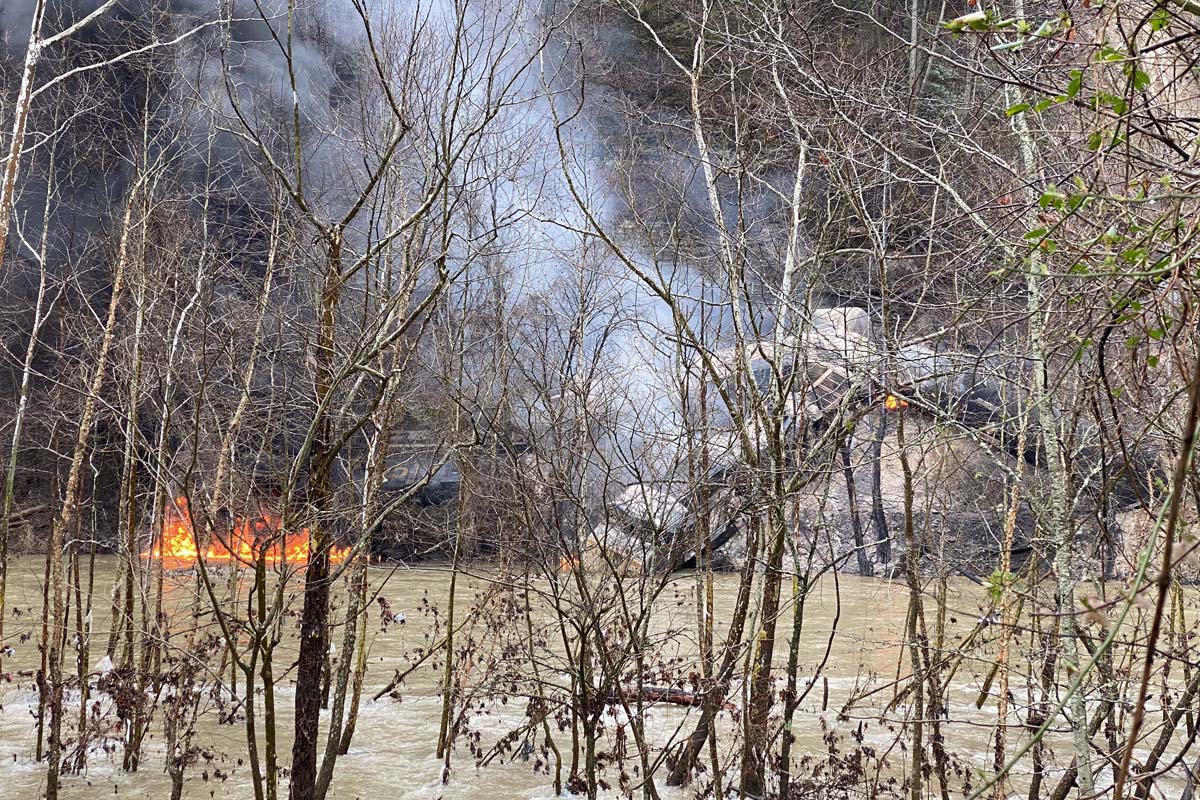
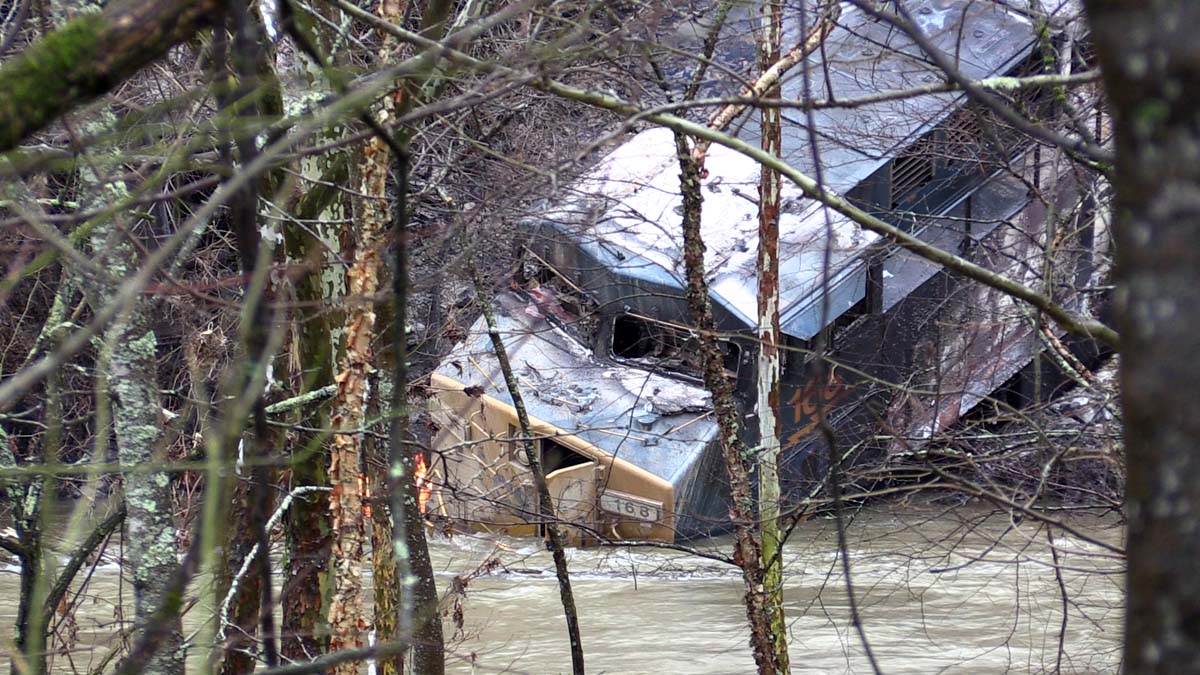


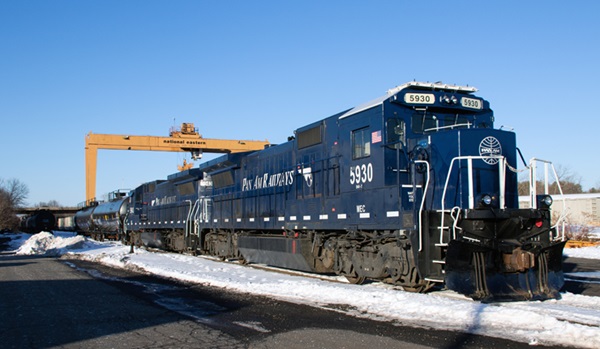
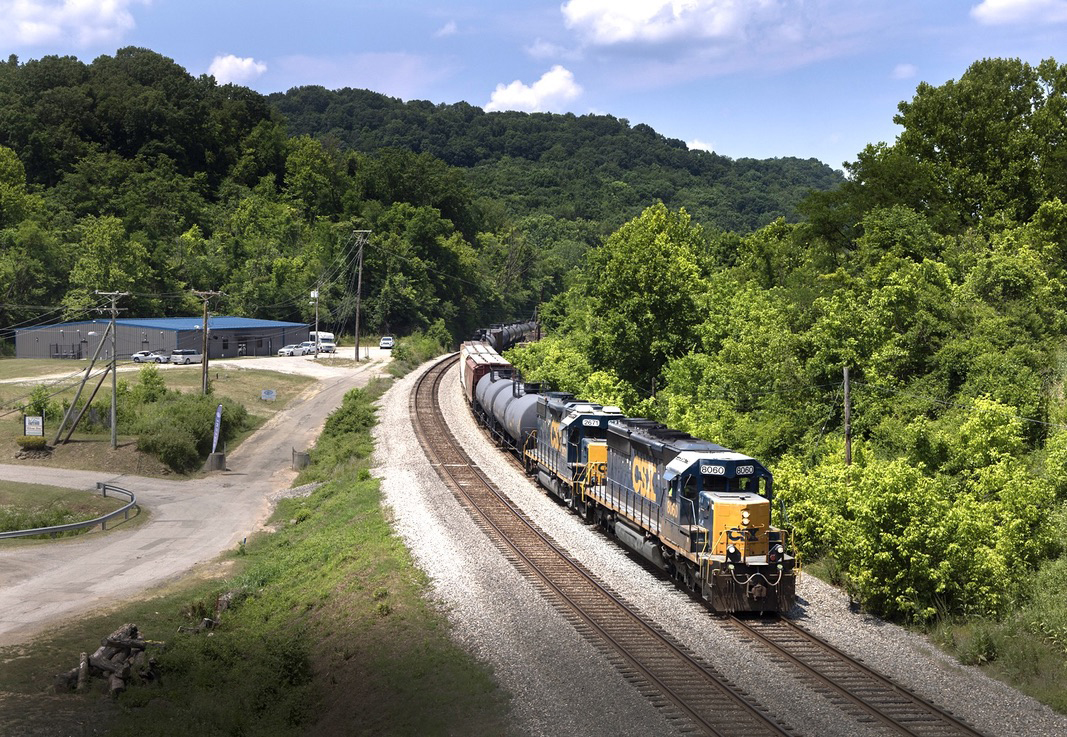
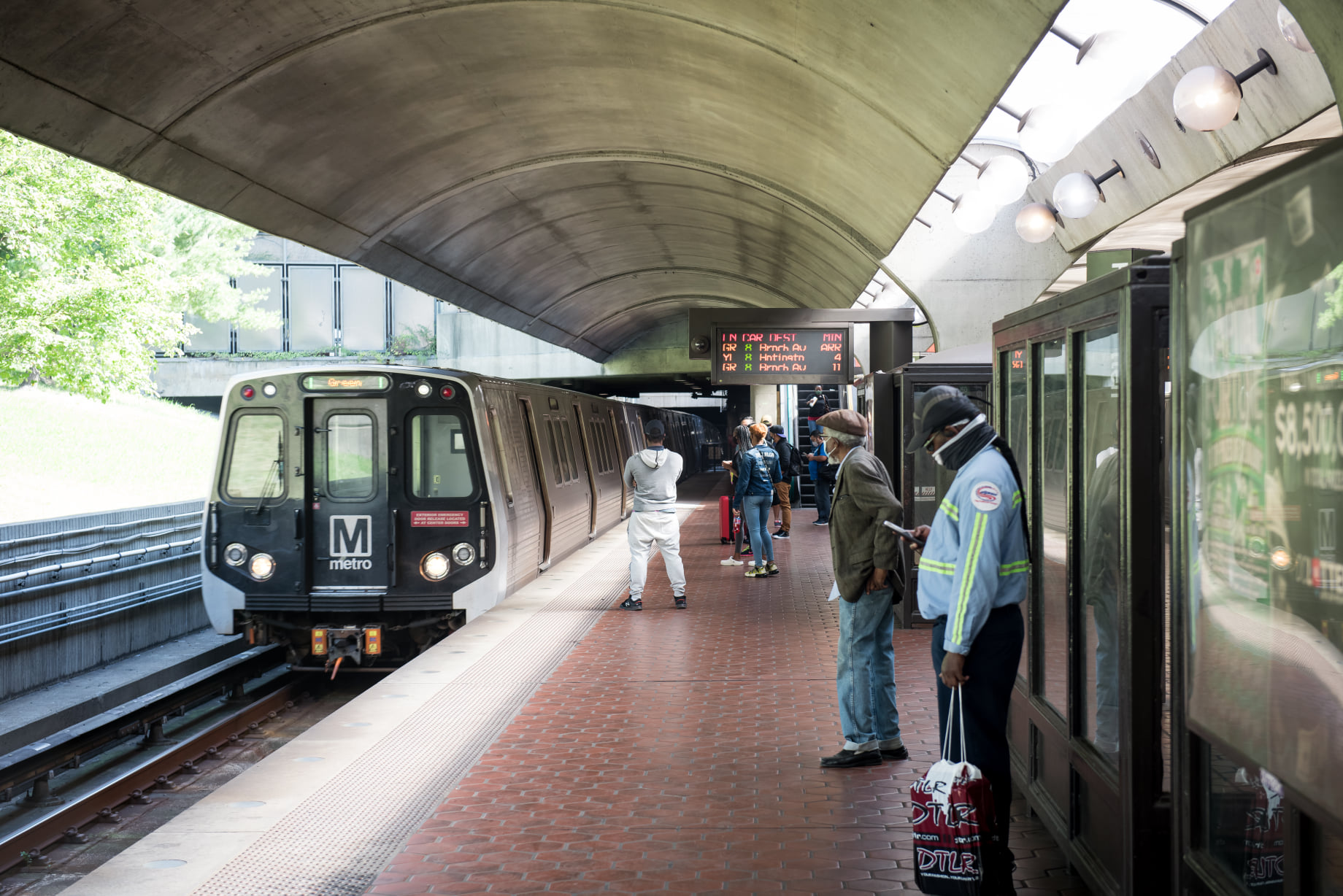




DO YOU KNOW the track WAS NOT INSPECTED and the derailment happened behind the inspection ? Also when was the last train over this section of track ? A track inspector could have been called and on his way ! If people left the Railroads do their jobs then all You Monday morning QB will be out of a JOB ! Roadmaster
I saw a report in another source that police said it was fortunate that the train was going at a slow speed or it would have been much worse. So maybe they were running at a restricted or reduced speed.
Mr. Cook: The cost to CSX of cleaning up after the derailment will probably exceed the $1,000,000 you suggest. Not to mention the extra costs incurred because the line is out of service. So I think a fine is besides the point.
If the RR knows where the slides are likely to occur I am surprised they haven’t installed slide fences. Relatively low cost and can be tied to the signal system or PTC. (For those who don’t know – a slide fence doesn’t hold back a slide, it simply indicates that something came down the slope and is potentially causing an obstruction.)
I agree. How ‘bout a Martin-Baker ejection seat? That would come in handy sometimes. Locomotives don’t float too long.
Railroads used to have a rule called “Reduced Speed”. It no longer exists for unknown reason. Used to give engineer information such as “Cows on track MP9” so he had his train under control looking for Cows at MP 9, but engineer saw track clear and all cows in herd far away, so he ran at 1 mph under track speed. That rule could be used for looking out for track obstruction, just like restrictive speed but less demanding when the engineer need not look for broken rail as in the rule of Restrictive speed.
When you have severe storms, the normal speed should no longer be used and all trains should be run with control of being stopped to prevent hitting a land slide. There should be slide fences in places and a signal system. Far more likely for a track patrol finding a problem than to have it happen between patrol and the engines of an hazardous train. Yes, it can happen to have a slide come down into the side of a moving train, as video show it happening on BNSF, and then the railroad is shut down till it dries out.
I lived in Florida next to FEC when they had their labor action, and FEC ran HiRail patrols at 50 MPH directly in front of each and every train. CSX needs to patrol and check the bridges also during severe storms. And put the Reduced Speed rule back in the book.
It’s about time railroads quit derailing hazardous cargoes. Perhaps Mr. Cook’s heftier fine would help them focus their attention.
W.Cook: BC Rail used to patrol in front of every train in areas of known risk. The patrol, originally a motorcar, later a hi-rail, was only minutes ahead of each train. They still had slides come down behind the patrol but ahead of the train. The railroads (track forces and train crews) know where problem areas are, but sometimes Mother Nature will provide an unpleasant surprise in a place that has been stable through many storms for over a century.
The RR is not helpless in this, or any other, situation in slide-prone territory. As stated, these locations are well known. The remedy is engineering clear areas 25 feet or more in slide zones. Look at any interstate highway in slide zones. That’s how it’s done. If necessary, tax money should be granted for public safety reasons. No trucking company fronted money for safe engineering on the interstate system. They pay through other means. RR pays taxes too.
Rick Protz, it’s about time railroads quit derailing hazardous cargoes? Do you think CSX did this on purpose? It was an act of nature that did it. If a tornado came along and did the same thing would you also blame CSX?
An act of nature, nothing more, nothing less.
I agree with you Mr Lampman. The slide could of happened seconds after the inspection passed the area. The article says that another slide happened while the clean up crew was working there. Like you say Mother nature doesn’t call ahead.
I agree with Gerald’s statement.
They are tank cars, not tankers.
Cook,
How do you know CSX didn’t inspect the track? Mother Nature doesn’t phone ahead to let anyone know what is coming or happened.
CSX should be fined for 239.01: Failure to make special inspection when required.
#213.239 Special Inspection: In the event of fire, flood, severe storm, or other occurrence which might have damaged track structure, a special inspection must be made of the track involved as soon as possible after the occurrence.
The entire Alleghany Mountain range had experienced a severe storm. Any one except Jacksonville, Florida could see that.
The fine should be $1,000,000. Not $1,000. Proceed with inspection ahead of every hazardous train would be the safer course, and if unsure with a hill side sliding, hold the train or reroute it. BNFS at NW Washington state hold trains until it is safer to run trains. When will the Traffic Managers do their job and manage only safe movements?
Was the units rear door damaged in the derailment? Looks using the rear door or engineers window for egress would have put them on solid footing unless another view would show a problem with that. Using the conductors window for egress would have put them in the water.
May God be with the all those involved. Locomotives need better emergency egress for crews to escape. From windows to the top of the cab..